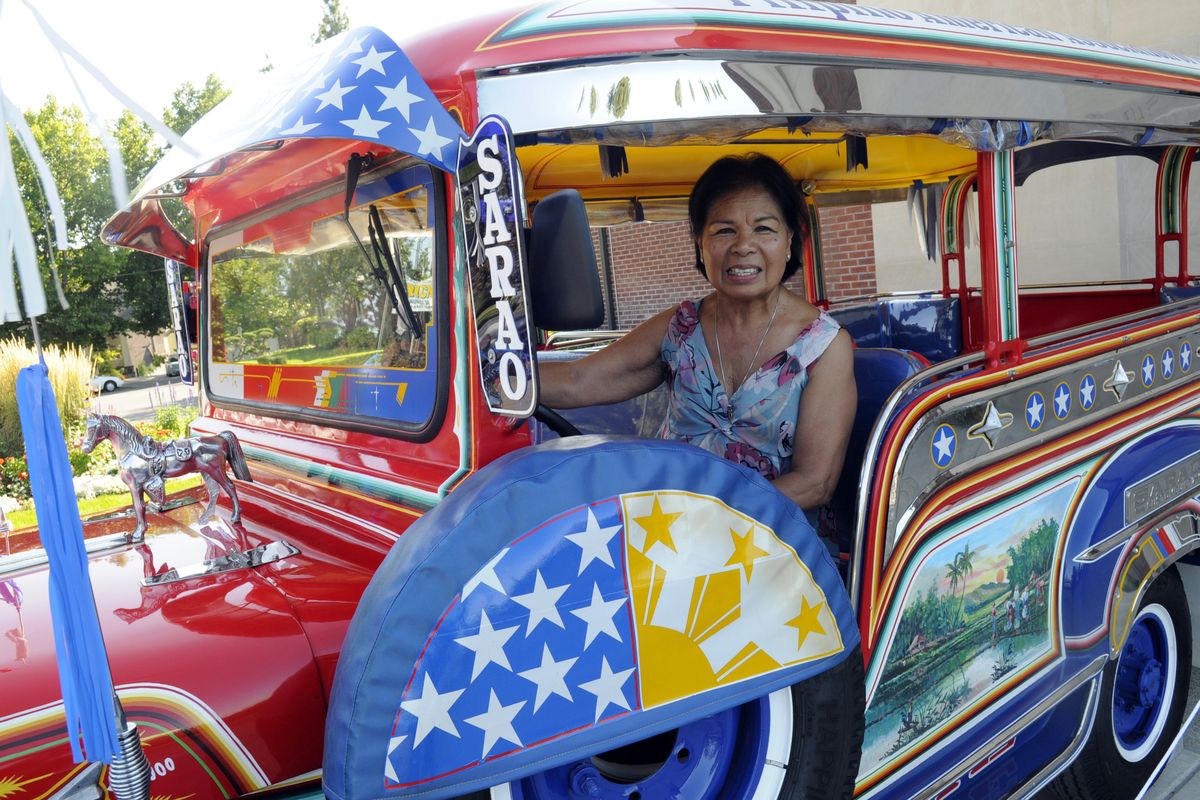Flamboyant jeepney evokes Philippine history

Imagine a safari jeep. Now, leave the windshield in but take out all the side windows and replace them with plastic curtains that can be rolled up. Then, pick a handful of bright colors and paint the doors and panels. Finally, add lots of chrome, and you have a Philippine jeepney.
On Sunday, a sparkling new jeepney was parked in front of St. Augustine Parish Hall on West 19th Avenue while the Filipino American Association of the Inland Empire was holding a fundraising Merienda Cena, a traditional mid-afternoon tea party.
“There were about 100 people,” said Norma Gavin, president of the the Filipino American Association of the Inland Empire, “and we raised around $1,600 toward the jeepney.”
Traditionally, a jeepney was made from a jeep left behind by American troops at the end of World War II. The military jeeps – or Willies – were stripped of military equipment, then painted in bright colors and recycled as taxis.
Immediately after World War II, the jeepney filled a spot as a guerrilla type of public transportation that would go any way its passengers needed to go and charging whatever fee the driver would agree to.
“Then they ran out of old jeeps, so they started building new ones from the chassis,” said Gavin. “This one is brand new and it’s built at one of the biggest jeepney factories in the Philippines.”
Today, jeepneys are still very common in the Philippines, though their routes and fares are regulated.
“People love them; they drive them everywhere,” said Gavin.
There’s one problem with this particular jeepney: it doesn’t have an engine yet.
“We imported it for exhibit only,” said Gavin. “It was easier to go through customs like this. But we are raising money for a Jeep or a Chevy engine that will fit in there.”
Gavin said the jeepney cost $8,000, and shipping was $7,000.
“We already have a mechanic who can put in the engine,” said Gavin. “He says it will be $5,000 to bring it to running condition. They have to do the brakes and all that, too.”
Gavin said it wasn’t easy to get the jeepney to the United States.
“There was all this paperwork to fill out,” said Gavin. “We did it all ahead of time, but the jeepney was still stuck in customs.” When Gavin heard from U.S. Customs that the jeepney likely would have to be shipped back, she panicked.
“I was so stressed out, I can’t tell you,” she said, now laughing. “I called Sen. Chris Marr, and he helped us.”
Just a few days later Gavin received an entirely different message from Customs, saying they’d help her fill out the last paperwork and the jeepney could be released on the spot.
“I am just so happy I can do this for my people,” said Gavin.
Don’t look for the jeepney to show up in Spokane’s taxi fleet. Gavin said even with an engine, the colorful vehicle is only for exhibition at shows and perhaps occasional rides around the park at local festivals and celebrations.
The Filipino American Association’s goal is to have the jeepney ready in time to drive it in next year’s Lilac Parade.
“Last parade, it was supposed to have been here, but it didn’t make it,” said Gavin. “The next Lilac Parade, we will definitely make it.”